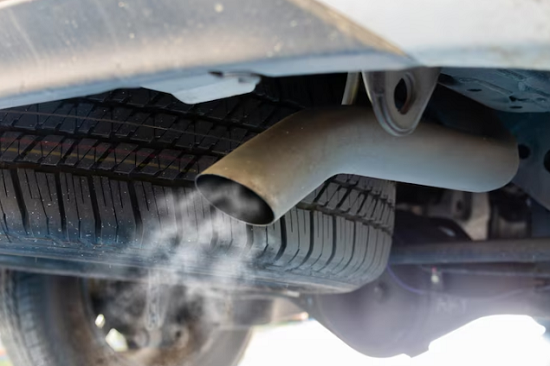

When it comes to owning a Jeep, there's no denying the thrill and adventure that comes with it. However, like any vehicle, Jeeps are not immune to certain issues and problems that can arise over time. From faulty wireless control modules to water leaks and shaky steering wheels, it's important for Jeep owners to be aware of the common problems they may encounter and how to address them. In this article, we'll explore the most common problems with Jeep cars and provide some tips and solutions for resolving these issues.
1. Faulty Wireless Control Module

One of the common problems that Jeep owners may face is a faulty wireless control module. Key fobs, which provide the convenience of wireless remote keys, can sometimes fail, leaving owners locked out of their vehicles or unable to start the car due to a failure in the computer system's communication with the wireless control module. While frustrating, this issue can be easily fixed by a qualified technician.
2. TIPM Faults

Jeep's Totally Integrated Power Module (TIPM) is responsible for the operation and maintenance of the entire electrical system in the vehicle. Faults in the TIPM can lead to various issues, such as sudden loss of power or an inability to start the vehicle. In some cases, the faulty TIPM module may need to be replaced, which can be a costly repair.
3. Water Leaks in Wrangler

Off-road enthusiasts expect their vehicles to withstand challenging terrains without experiencing weather-related issues inside the cabin. However, some Jeep Wrangler owners have reported water leaks from the upper corners of the front doors, leading to pooling water on the vehicle's floor. Addressing this issue may require inspecting and replacing door seals or weather stripping.
4. Shaky Steering Wheel

Jeep owners of models like the Wrangler and Grand Cherokee may encounter what is commonly referred to as the "Death Wobble." This issue manifests as a shaking and vibrating steering wheel when driving at high speeds or after hitting a bump. Although there haven't been any reported accidents caused by the Death Wobble, it is still important to address this issue promptly. Consulting with a qualified technician can help identify and resolve any worn steering or suspension parts that may be contributing to the problem.
5. Exhaust Leaks

Certain Jeep models, including the Cherokee, Grand Cherokee, and Wrangler with the 4.0-liter 6-cylinder engine, have been known to develop exhaust leaks. This issue is often caused by cracks in the exhaust manifold due to repeated heating and cooling. Signs of an exhaust leak may include ticking sounds from the engine or reduced fuel mileage. It is crucial to address this issue promptly to prevent further damage and ensure optimal engine performance.
6. Ignition Switch Recall

Owners of 2006 and 2007 Jeep Grand Cherokees or Commanders should be aware of a recall related to ignition switch faults. This issue can cause the engine to switch off while driving, posing a safety risk. It is essential to have the ignition switch replaced by an authorized dealer or service center if it hasn't been done already.
7. Fuel Overflow

Some Jeep models, particularly the 2005-2012 Wranglers and 2005-2011 Liberties, have been reported to experience issues with gas overflowing when filling up the tank. This problem can have various causes and potential solutions, ranging from a new filler neck to a replacement gas tank. Addressing this issue promptly is crucial to prevent any hazardous situations and maintain the vehicle's overall performance.
8. Window Motor Failure

Jeep models like the Grand Cherokee and Liberty have been affected by issues with window regulators and motors. Drivers may experience sudden window drops while driving or the complete failure of window motor operation. It is recommended to inspect and potentially replace damaged or misaligned window regulators if window motor failure occurs.
9. Tail Light Circuit Corrosion

Grand Cherokees have been known to suffer from corrosion in the tail light circuit boards. This can result in non-functional lights even after replacing bulbs. To address this issue, it may be necessary to replace the circuit board or the entire tail light assembly. Regular inspection and maintenance of the tail light seals can help prevent water seepage and subsequent corrosion.
10. Transfer Case Failures

The transfer case is responsible for shifting a Jeep between 4WD and 2WD. Over time, the seals in the transfer case can break down, leading to leaks and potential wear on the gears. Monitoring and addressing transfer case leaks promptly can help prevent further damage and maintain optimal performance. Additionally, adjusting the transfer case shifter rod alignment may resolve issues with engaging 4WD.
Thanks for giving your valuable time to read this blog, In case you are having another brand car for example Jaguar and you are looking for a jaguar service dubai center then visit Service My Car website in case you need any service or repairs.
Conclusion
Owning a Jeep comes with its fair share of challenges, but being aware of the common problems and how to address them can help ensure a smooth and enjoyable driving experience. Whether it's a faulty wireless control module, water leaks, or issues with the TIPM or exhaust system, prompt attention and regular maintenance are key to keeping your Jeep in top shape. By staying proactive and seeking professional assistance when needed, Jeep owners can overcome these common problems and continue to enjoy the thrill of their off-road adventures.












